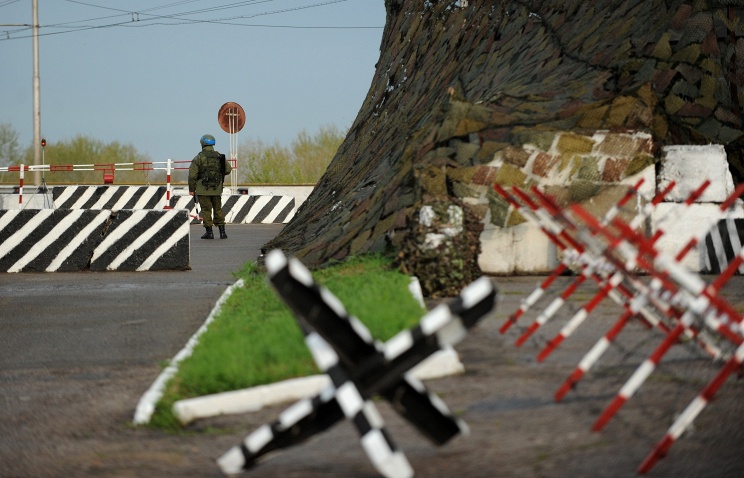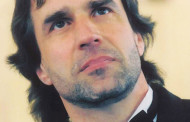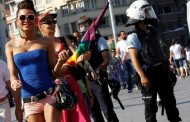The Ukrainian Defense Ministry’s intention to deploy air defense systems on the border with the self-proclaimed republic of Transdniestria clearly pursues the aim of dragging Russia into another regional conflict to which NATO might be a party, which should certainly ring the alarm bell for the EU countries, the president of the International Centre for Geo-Political Analysis, Leonid Ivashov, told TASS in an interview.
The Odessa-based Internet resource Timer says with reference to the Ukrainian Defense Ministry the S-300 air defense complexes are to protect the country in the south of the Odessa Region, on the border with the Transdniestrian republic.”
In the meantime, the newly-appointed governor of the Odessa Region, Mikheil Saakashvili, said one of his priorities was to tighten security on the border with Transdniestria, which he described as source of weapons and narcotic drugs smuggling. There is a possibility the entire 450-kilometer-long border between Ukraine and Transdniestria may be closed. In fact, the Ukrainian authorities will then lay siege to a region with a population of half a million.
The Transdniestrian Moldovan Republic is a tiny land-locked self-proclaimed state in the Southeast of Europe, sandwiched between Moldova and Ukraine. Transdniestria proclaimed independence from Moldova in 1990 against the backdrop of a process still remembered as “parade of sovereignties” and the eventual collapse of the Soviet Union. After the armed conflict of 1992 it broke away from Moldova. Under the agreement of 1992 a small peace-keeping contingent of three battalions – Russian, Transdniestrian and Moldovan – is present in Transdniestria on a permanent basis. Also, there is a Russian peace-keeping operative group of 1,000 troops is based in Transdniestria.
Ukrainian President Petr Poroshenko in May made a decision to prohibit Russian military from going to Transdniestria and back through Ukrainian territory. The Ukrainian Parliament on June 4 adopted a law opening up an opportunity for inviting foreign troops into the country to provide assistance to Ukraine at its request.
Colonel-General Leonid Ivashov, retired, believes that the Ukrainian President Petro Poroshenko’s intention to station air defence systems on the border with Transdniestria is in fact an ultimatum upsetting the possibility of an air bridge between Russia and Transdniestria. “Should a single Russian plane be shot down or a single Russian soldier killed, the events may take an irreversible course. Poroshenko is deliberately provoking Moscow into a tough response to Ukraine’s steps to establish a military blockade of the self-proclaimed Dniester Republic to ask NATO to send troops to Ukraine on the pretext of a newly-triggered conflict,” Ivashov told TASS.
“This is precisely the task that Washington has set to Poroshenko – starting a conflict with Russia in Transdniestria,” he believes. “For the same purpose the United States advised Poroshenko to appoint Saakashvili as the governor of the Odessa Region bordering on Transdniestria.”
“The United States had already tried to lure Russia into an armed conflict in Donbas, in the Southeast of Ukraine. It failed. Transdniestria has been selected as the next territory for staging an anti-Russian provocation. Moscow will be faced with a dilemma – either leaving 200,000 of its citizens and Russian peacekeepers in the self-proclaimed republic at the mercy of their fate, or getting involved in an armed conflict. By leaving its own people in the lurch Moscow would lose face and world prestige. Should it intervene, it will be blamed for an act of aggression, the way it happened in Georgia in 2008,” Ivashov said.
He recalled that the commander of NATO’s forces in Europe, US General Philip Breedlove, was notorious for his repeated belligerent statements addressed to Russia.
“In April last year, at the very start of an armed conflict in the southeast of Ukraine Breedlove alleged that Russian troops were prepared to occupy a greater part of Ukraine within three to five days and declared that NATO would exert every effort to provide a response to Russia’s “aggressive” approach. Now, in view of the newly-adopted law on the possibility of inviting foreign troops into Ukraine the United States would like to get the Russian army involved in a standoff with NATO troops in Europe,” Ivashov said.
“Moscow should offer clear explanations to the European Union countries, Germany, in the first place, that there might follow not a regional conflict but a big war in Europe. Before it is to late the remaining controversies over Transdniestria should be settled by political and diplomatic means to rule out a situation where military force might be the last resort,” Ivashov said in conclusion.






Recent Comments
екатерина in: Телефоны «горячей линии» Центрального Республиканского банка ДНР
добрый день! подскажите , Республиканский банк осуществляет денежные ...
lsammart in: Lagarde: Greece referendum "irrelevant after Tuesday"
They cannot stand a demcratic process! I hope Greece may reject IFM p ...
roger in: Télévision ukrainienne soutient le massacre des Russes
Peut-etre que Chris voulait dire qu'il n'y a pas de soldats russes au ...
roger in: Lagarde: Greece referendum "irrelevant after Tuesday"
mme. Lagarde, who do you think you are to say that a referendum is irr ...
roger in: Lagarde: Greece referendum "irrelevant after Tuesday"
Default, abandon euro and europe and get back your drachma. It's bett ...